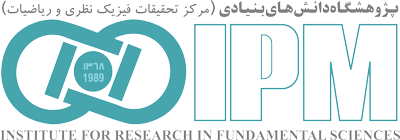“School of Astronomy”
Back to Papers HomeBack to Papers of School of Astronomy
| Paper IPM / Astronomy / 14579 | ||||||||||||||||||||||||||||
|
||||||||||||||||||||||||||||
| Abstract: | ||||||||||||||||||||||||||||
|
We have conducted a near-infrared monitoring campaign at the UK InfraRed Telescope (UKIRT), of the Local Group spiral galaxy M33 (Triangulum). On the basis of their variability, we have identified stars in the very final stage of their evolution, and for which the luminosity is more directly related to the birth mass than the more numerous less-evolved giant stars that continue to increase in luminosity. In this fifth paper of the series, we construct the birth mass function and hence derive the star formation history across the galactic disc of M33. The star formation rate has varied between ∼0.010±0.001 (∼0.012±0.007) and 0.060±0.005 (0.052±0.009)M⊙ yr−1 kpc−2 statistically (systematically) in the central square kiloparsec of M33, comparable with the values derived previously with another camera. The total star formation rate in M33 within a galactocentric radius of 14 kpc has varied between ∼0.110±0.005 (∼0.174±0.060) and ∼0.560±0.028 (∼0.503±0.100) M⊙ yr−1 statistically (systematically). We find evidence of two epochs during which the star formation rate was enhanced by a factor of a few -- one that started ∼6 Gyr ago and lasted ∼3 Gyr and produced ≥71% of the total mass in stars, and one ∼250 Myr ago that lasted ∼200 Myr and formed ≤13% of the mass in stars. Radial star formation history profiles suggest that the inner disc of M33 was formed in an inside-out formation scenario. The outskirts of the disc are dominated by the old population, which may be the result of dynamical effects over many Gyr. We find correspondence to spiral structure for all stars, but enhanced only for stars younger than ∼100 Myr; this suggests that the spiral arms are transient features and not part of a global density wave potential
Download TeX format |
||||||||||||||||||||||||||||
| back to top | ||||||||||||||||||||||||||||



















